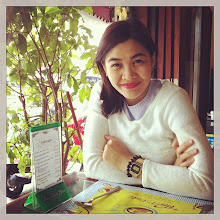Here's another highlight of our bonding trip to Beijing last year with my Mom and brother. The Forbidden City! I guess you didn't go to China if you haven't visited this place.
Forbidden City, also known as the Palace Museum, and Gu Gong in Chinese, lies at the city center of Beijing, and once served as the imperial palace for 24 emperors during the Ming and Qing Dynasties (1368 - 1911). It was first built throughout 14 years during the reign of Emperor Chengzu in the Ming Dynasty (1368-1644). Ancient Chinese Astronomers believed that the Purple Star (Polaris) was in the center of heaven and the Heavenly Emperor lived in the Purple Palace. The Palace for the emperor on earth was so called the Purple City. It was forbidden to enter without special permission of the emperor. Hence its name 'The Purple Forbidden City', usually 'The Forbidden City'. SOURCE.
Now known as the Palace Museum, it is to the north of Tiananmen Square. Rectangular in shape, it is the world's largest palace complex and covers 74 hectares. Surrounded by a 52-meter-wide moat and a 10-meter-high wall are more than 8,700 rooms. The wall has a gate on each side. The distance between the south Meridian Gate (Wumen) and the north Gate of Divine Prowess (Shenwumen) is 961 meters (1,051 yards), while the distance between the east and west gates is 753 meters (823 yards). There are unique and delicately structured towers on each of the four corners of the curtain wall. These afford views over both the palace and the city outside. SOURCE.
It is divided into two parts. The southern section, or the Outer Court was where the emperor exercised his supreme power over the nation. The northern section, or the Inner Court was where he lived with his royal family.
SOURCE.
Until 1924 when the last emperor of China was driven from the Inner Court, fourteen emperors of the Ming dynasty and ten emperors of the Qing dynasty had reigned here. Having been the imperial palace for some five centuries, it houses numerous rare treasures and curiosities. Listed by UNESCO as a World Cultural Heritage Site in 1987, the Palace Museum is now one of the most popular tourist attractions world-wide. SOURCE.
Construction of the palace complex began in 1407, the 5th year of the Yongle reign of the third emperor (Emperor Chengzu, Zhu Di) of the Ming dynasty. It was completed fourteen years later in 1420, and then the capital city was moved from Nanjing to Beijing the next year. It was said that a million workers including one hundred thousand artisans were driven into the long-term hard labor. Stone needed was quarried from Fangshan District. It was said a well was dug every fifty meters along the road in order to pour water onto the road in winter to slide huge stones on ice into the city. Huge amounts of timber and other materials were freighted from faraway provinces.
SOURCE.
Ancient Chinese people displayed their very considerable skills in building it. Take the grand red city wall for example. It has an 8.6 meters wide base reducing to 6.66 meters wide at the top. The angular shape of the wall totally frustrates attempts to climb it. The bricks were made from white lime and glutinous rice while the cement is made from glutinous rice and egg whites. These incredible materials make the wall extraordinarily strong. SOURCE.
Since yellow is the symbol of the royal family, it is the dominant color in it. Roofs are built with yellow glazed tiles; decorations in the palace are painted yellow; even the bricks on the ground are made yellow by a special process. However, there is one exception. Wenyuange, the royal library, has a black roof. The reason is that it was believed black represented water then and could extinguish fire.
Nowadays, it is open to tourists from home and abroad. Splendid painted decoration on these royal architectural wonders, the grand and deluxe halls, with their surprisingly magnificent treasures will certainly satisfy 'modern civilians'. SOURCE.
This is just the best in our trip to Beijing! Interested in checking out this place too? Here are the directions on how to go there...
How to get there:
Entry is allowed only through the Meridian Gate, the south gate of the museum.
1. Subway:
a. Take subway line 1, get off at Tiananmen East Station (Exit A) or Tiananmen West Station (Exit B), find the Tiananmen Tower, and then walk north to the Meridian Gate;
b. Take subway line 2, get off at Qianmen Station (Exit A), walk north through the Tiananmen Square, pass the Tiananmen Tower, and then find the Meridian Gate further north.
2. Bus:
a. Take bus no. 1, 2, 52, 59, 82, 99, 120, 126, Tourist Line 1, or Tourist Line 2, and get off at Tiananmen East Station;
b. Take bus no. 1, 5, 52, 99, Tourist Line 1, or Tourist Line 2, and get off at Tiananmen West Station.









0 Response to "2016 Bonding in Beijing: Forbidden City"
Post a Comment